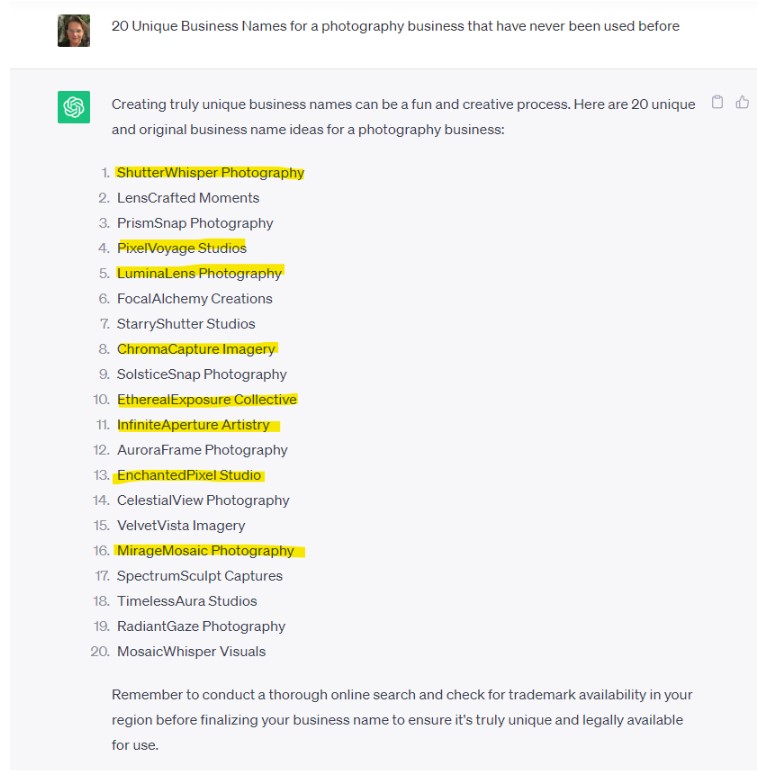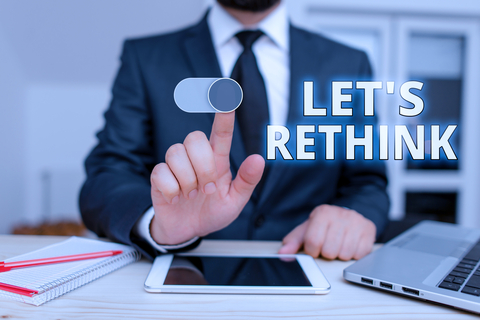by Heather T. | Sep 27, 2023 | Business, Marketing, Observations

Logo designed for the Lake Sunapee Chowder Challenge. circa 2009(ish)
(estimated time 2-15+ hours)
-Costs can range from $50-$500+.
Costs and time spent can vary for logos. You can design it yourself, hire a logo designer, or use a freelancer or logo contest site to design it.
What is the logo going to be used for? List all potential uses your business might use a logo for, not just in the start-up phase but down the road. Is it going to be embroidered? Will it be used for large banners at tradeshows?
It’s a good practice to look at any potential logos and shrink them down to a size that might used on your business cards. Can the graphic be seen and interpreted clearly? Can any text on it or incorporated on it be read easily?
How will the logo look in Black and White and Grayscale if the logo is color?
How many colors will you use? Two-color and three-color logos will be more cost-effective than a color using four colors or more. Because personal printers and commercial printers are sometimes going to have different color hues, keep in mind what looks good to you on the web is not necessarily going to be the same colors you see when you print your logo out on your home printer, or you send the logo to a printer to use on your business cards.
When I first designed the Lake Sunapee Chowder Challenge Logo years ago (above), I didn’t know nearly as much about logo design as I do now. If I had designed this now, I would have colorized the kettle and made sure it was the same design style. The fish is more cartoon-oriented, and the kettle (clip art with some modifications) is more 3D with shading. When translated into black and white, there was still enough definition in the uses we were using it for at the time, print advertising, website and Facebook, large banners, and T-shirts, but the kettle, if done in more bold lines vs. shading would have translated even better into black and white, and this would not have translated well if used for an embroidered logo.
For size, always design as large as possible; it’s easy to scale the size down. It’s impossible to take a small logo with a small resolution and enlarge it, as it will become very fuzzy and pixelated.
If you are doing the logo yourself (and it is a good idea to check whether you are using a graphic designer or another service as well.) Before officially putting it into use, check to see if other similar logos exist. Brand confusion and copyright infringement issues can come up; for example, your logo resembles the Harley Davidson logo. Many DIYers and low-cost designers will use stock graphics as the base for logos, which can be fine, but you can also run into brand confusion if the background graphic is used in other logos extensively and a possible copyright claim.
An example is an association that had someone create a logo for them a few years ago and spent a lot of money on it. Neither the association nor the designer did a back image search on it, and it turns out the main graphic used was used in dozens and dozens of other logos prior.
Upload the graphic to https://tineye.com/ and into Google Image Search https://images.google.com/ and see what pops up. This is especially important if you are planning on copyrighting the logo.
The U.S. Copyright Office at the Library of Congress registers copyrights:
https://www.copyright.gov/
Explanation of Copyright vs Trademark
https://www.uspto.gov/trademarks/basics/trademark-patent-copyright
If using a logo designer:
1. Make sure you get the logo in multiple sizes (including a large print size) and in as many digital formats as possible: JPEG, TIFF, PNG, Vector, B&W, Grayscale, Bitmap, and GIF (at the minimum). Clarify with the designer that this is being used for print AND digital. Digital only generally translates poorly to many larger sizes you might need for print.
2. Make sure they are giving you the name of the font they used or if you have a font preference (this is a consideration in advance to think about before talking to a designer as you need to provide them with this information up front), is this a font you want to use for other things? Are you going to have to purchase it if it’s not a standard font, and if you want to use it for your website, is it a web-safe font? See https://www.w3schools.com/css/css_font_websafe.asp.
3. Make sure they give you the color codes for the colors used in the logo. HEX codes and RGB codes as if you would want to tie those colors into your other branding (website, print items, etc.) https://negliadesign.com/ask-a-designer/whats-the-difference-between-pms-cmyk-rgb-and-hex/
Some addtional resources:
Should I copyright or trademark my logo?
https://www.shermanip.com/should-i-copyright-or-trademark-my-logo/
14 Of The Best Logo Makers To Design a Logo In 2020
15 Things You Must Know About Logo File Types
Reverse Image Search
Pantone Color Finder
Online RGB Color Picker
(GIMP) GNU Image Manipulation Program (an alternative to Photoshop)
Color Blind Image Simulator
Logo Design Sourcing and Contests
Experienced inexpensive designers/freelancers
Other resources:
by Heather T. | Sep 9, 2023 | Business, Marketing, Observations, Operations, Safety, Security, Social Media
 This is my 2 cents based on what I know about AI so far. Since I am still spending several hours per day learning new AI platforms, and new information it’s going to be a moving target info wise, this is my knowledge and my personal take on all of this so far.
This is my 2 cents based on what I know about AI so far. Since I am still spending several hours per day learning new AI platforms, and new information it’s going to be a moving target info wise, this is my knowledge and my personal take on all of this so far.
AI Platforms output is not always correct, ALWAYS fact check especially if you are using it for a research tool. Hopefully that information is out there already for most people, but I’m still running into people just testing the waters for the first time that don’t actually know that.
Keep in mind anything added to AI engines is being used to train the AIs; don’t ever put confidential or private information in. Also, be cognizant of putting any personal information in. Just like you shouldn’t be using your favorite vacation spot as a password, hackers are also using personal information to train AIs to hack into accounts.
There has been a recent uptick in hacked social media accounts that is being attributed to AIs being trained by hackers to browse for personal information used publicly online, and that can include data being put into AI generators.
Some AIs are allowing you to opt out of data gathering as well as some platforms and programs that also integrate AI into their software.
To opt out of ChatGPT
- Go to your account at far left bottom, click on the three dots
- Go to settings
- Go to the Data Controls tab on left
- Slide “Chat history & training” to off
Meta/Facebook
Adobe
Don’t use text straight from an AI platform for website text, blog text, or any other online published article text (social media posts are an exception as far as I can tell). Always rewrite and reword a bit. Google can tell it’s AI-generated content, and it can affect your Search Engine Optimization (i.e., how a business website gets found in Google search)
Don’t sign into any AI platform with your Google account or social media accounts, ALWAYS use an email and a unique password to login. Giving access to your Google account creates a backdoor which from a business and personal standpoint, can compromise your email account, and any other Google accounts you own: (Google Suite, Google Drive, Google My Business, Youtube, Google Docs, etc.).
If you are not familiar with Data Breaches and the cost of how it can affect a business (The global average cost per data breach was 4.45 million U.S. dollars in 2023.), please read https://www.upguard.com/blog/cost-of-data-breach and https://www.statista.com/statistics/273575/us-average-cost-incurred-by-a-data-breach/ .
This is also how many social media accounts get hacked. Granting access to Facebook through a backdoor can cause an account to get hacked, and just changing the password to the account, does not remove access, you have to remove app access too.)
If someone does give access to a Google account, and needs to unlink it/revoke permissions , here is a walkthrough https://support.google.com/accounts/answer/2541991?hl=en#:~:text=Select%20Connected%20accounts.
Revoke app access/external Access (social media)
Facebook https://www.facebook.com/help/942196655898243
Instagram https://help.instagram.com/588549329146493
Linkedin https://www.linkedin.com/help/linkedin/answer/a519947
Pinterest https://help.pinterest.com/en/article/connect-to-other-apps-with-pinterest
X (formerly Twitter) https://help.twitter.com/en/managing-your-account/connect-or-revoke-access-to-third-party-apps
Tiktok https://support.tiktok.com/en/safety-hc/account-and-user-safety/connect-to-third-party-apps
Please be extremely careful adding browser extensions to your browser to extend AI capabilities, there are A LOT of unsafe, unsecure and malicious browser extensions out there that can compromise people’s computers and contain malware or keyloggers, a good overview of browser security can be found here https://security.berkeley.edu/education-awareness/browser-extensions-how-vet-and-install-safely .
Malware can use known software vulnerabilities to infect your PC. A vulnerability is like a hole in your software that can give malware access to your PC. When you go to a website, it can try to use vulnerabilities in your web browser to infect your PC with malware. Apple computers can also be compromised as malware and virus programs designed specifically to attack Macintosh operating systems can be even more malicious and destructive than ones designed to attack PCs.
A keylogger is a form of malware or hardware that keeps track of and records your keystrokes as you type. It takes the information and sends it to a hacker.
A best practice is to NOT download any AI software. If there is a web-based version, use that instead. Before downloading any kind of software, do your research. Just Googling the name and reviews, or the name and whether it is safe will not give you legitimate search results. Insecure and malicious sites and software have a lot of sites that are either set up by them or paid to have them set up to make software come across as safe and legitimate. If you do download anything, make sure you have a good antivirus AND a good malware program, and it’s up to date; scan the program files before installing. When in doubt (even a little) don’t do it.
*Most antivirus programs say they cover malware, but they only cover a fraction of what’s out there. It’s best practice to have both. On average, over 500K malware and virus programs are created daily. I recommend Malwarebytes (free and paid versions are available). There are other good ones out there as well.
Be cautious when using AI photo editors/generators. This is a big gray area online at the moment, but watermarks and digital watermarks are being pulled into AI-generated works. Remember that AI-generated art aggregates other online media and creates something with it, including copyrighted artwork and photos.
Currently, it’s best practice not to use AI-generated art on anything online “owned” by a business—a website, blog, etc. There is a spate of lawsuits going on currently regarding copyright, and until things are officially ruled on, it’s better not to take a chance. I look at it this way: if a business gets sued for using a copyrighted image that was integrated and generated by an AI platform, the AI platform has Terms of Service that give themselves a waiver (the platforms) from liability but not the business, and even if the suit does get dismissed, there is the time, money and reputation of the business that is risked.
Until the courts have consistently ruled about this and more AI art generators start to accept their own liability for using copyrighted art in generated work, it’s better to be safe than sorry.
If a business gets hit with a claim by Getty images, the beginning claim will start at around $1500, they don’t care if you remove the image online, they WILL send collections to harass a business until they pay up. If you want some background on Getty copyright claims just Google: “Getty images copyright claims small businesses” or email me. I’ve been told horror stories by hundreds of businesses, and had to help several dozen businesses over the years who have been hit with Getty claims.
Keep in mind as well that many AI art generators claim copyright to the images produced and many only state that you can use the generated images for non-commercial use.
(September 7, 2023) Microsoft announced it will protect users from Copyright claims. (Which is terrific news, hoping additonal platforms will step up to this).
https://blogs.microsoft.com/on-the-issues/2023/09/07/copilot-copyright-commitment-ai-legal-concerns/
Canva (Canva.com) terms of service regarding AI generated content (as of 9/8/2023)
https://www.canva.com/policies/text-to-image-terms-2022-12-06/ *Note: Read the Legal Notice
I’ve talked to Canva about this, and they refer to this (above link) and have stated by email that to date, they will not be liable for any copyright claims. I first found this as a potential issue because certain prompts in their text to AI image generator, particularly using the watercolor feature, return a large portion of the time images that look like they have copyright signatures in them. From our 17 email exchanges about this topic: “We understand that the appearance of signatures on AI-generated images can be surprising and even concerning. We’re exploring solutions to mitigate their occurrence. However, the signature generated by Text to Image is just that: generated by the AI model. The AI model (Stable Diffusion) has learned from reviewing billions of pieces of data that some forms of images, such as paintings, often have a signature in a bottom corner, so it generated its own variation of one in response to the prompt.” Interesting that the AI platform only seems to be assigning “create a watermark” to the watercolor feature and not concept art, color pencil or ink print, to name a few options, and it doesn’t explain things that pop up like on the image to right where you have a double signature……. I have noticed (so maybe they paid a little attention) that the number of images has decreased in recent testing, but the one on the right I generated on Friday in Canva, so they still have some work to do. And since Getty Images is in the midst of a lawsuit with Stable Diffusion about this very topic…….
Example:

I love Canva, it’s incredibly useful, don’t get me wrong, but I also have a much greater concern that someone i.e. a small business, will use an image generated by the Canva Image generator and get sued not understanding that Canva isn’t going to protect them. So make sure the TOS is read and more importantly understood!
Stability AI https://stability.ai/terms-of-use (as of 9/8/2023)
Midjourney https://docs.midjourney.com/docs/terms-of-service (as of 9/8/2023)
DeviantArt https://stability.ai/terms-of-use (as of 9/8/2023)
The better the prompt the better the results, a good resource for learning how to use prompting is https://learnprompting.org/
I found using several AI platforms at once and putting in the same prompts gives in some cases, very different and varied feedback/results, if you’re using it for marketing, use it to cherry pick the best of the best.
Useful AI Platforms (there are many many more)
https://chat.openai.com/ (free and paid versions, the paid version is $20 per month)
https://claude.ai/chats
https://bard.google.com/
https://www.bing.com/?scope=web&cc=US
https://elicit.org/ (for research from papers and publications)
How can it help small businesses? and What can AI be used for?
To date this list (and it’s the tip of the iceberg) is what “I” have used AI platforms/generators/sites for and found useful. There are 100’s of additional uses besides these listed, these are just the ones I’ve used so far. I find I’m using AI on a daily basis as it is so incredibly useful for a wide variety of things.
For marketing and business development:
- Research (always fact check)
- Business and consumer trends (always fact check)
- Article rewrites (see above #3)
- Social Media Posts
- Email scripts and scripts for autoresponders
- Keyword Research (always fact check)
- Generate video scripts
- Creating chatbots for customer service
- Automating emails
- Writing social media ad copy
- Writing print ad copy
- Writing Google Ad words and Bing Ad words copy
- Create, edit, and modify media and video files (mostly paid AI platforms including ChatGPT plus)
- Blog titles
- Blog posts (see above #3)
- Email marketing subject lines
- Email marketing content
- Website content* (see above #3)
For operations:
- Training Manuals
- Employee Manuals (always run by an HR pro)
- Transcribing text
- Automating tasks
- Voice assistants
- Help with grant writing/grant writing
- Cover letter and resume writing
- Inexpensive marketing ideas for small businesses
- Generate customer surveys
- Proofreading and Editing
- Create contracts (always run by a business lawyer)
- Scripts for lectures and talks (or a speech for an event or wedding)
- Lesson plan outlines
- Writing and debugging code
- Creating WordPress plugins
- Creating WordPress themes
- Write product descriptions
- Create tests
- Explain complex topics in layman’s terms
- Create content in other languages (please use a human being to double check)
- Create Interview questions
- Translate text
- Create outlines for a book or other content
- Creating job descriptions
- Creating job applications
- Creating job search listing content/text
- Extract data from text
- Product/service name ideas (same caveat as business name ideas below/Please check!)
- Business name ideas** (see below screenshot). Please make sure any business names are checked online before registering, in testing most of the major AI generators/platforms they are ALL making suggestions that when do a search in Google, many of the business names are already being used. This is a screenshot from the paid version of ChatGPT. Highlighted names for example are names already in use (9/8/2023)

Again this is the TIP of the iceberg on what a business can do with AI, with the exception of the video editing, all of the above were done using the free versions and free tools that were out there without adding browser extensions, or giving access to my Google account. So until the wild west of AI platforms has some more security and rules and regulations in place, how safe do you want to keep your business??
AI Program/Platform Directories (Many more out there, I found these useful to start)
One of the good Newsletters I subscribe to: (there are hundreds +++ out there. This one is an aggregate)
Articles of Interest:
by Heather T. | Sep 5, 2023 | Blog, Business, Marketing, Observations, Operations
 How many of you get stuck on a project when you’ve got too much on your plate? Or more specifically encountered a roadblock and not moving forward.
How many of you get stuck on a project when you’ve got too much on your plate? Or more specifically encountered a roadblock and not moving forward.
The next time you’re feeling defeated or overwhelmed, take a step back and resist the urge to look ahead. Instead, take a moment to look back.
If you are familiar with the concept of emotional intelligence, you might be familiar with this term, but I want to elaborate a little for those who are not.
What is Reappraisal?
Reappraisal involves mentally reframing an event to reduce the negative emotions you feel.
This is not the same thing as reconsideration, which is the act of “thinking” about something again, especially to change a decision or opinion.
Reappraisal is the act of “assessing or evaluating something again,” often to determine its current value or worth.
While both involve revisiting a previous decision, reconsideration involves a potential change in opinion or decision, while reappraisal is focused on reassessing value or worth. And to help change your mindset.
For example, let’s say for example that I spilled the soda that I was going to have for lunch, and I now only have water left to drink.
I might tell myself that well, “It’s okay because at least I have water; there are people who have nothing out there to drink in countries with food and water insecurities”.
That can also be self-limiting, though, because if anyone grew up with parents who said things like “eat your peas; there are people starving in other countries.” I did. There was no direct connection to the reasoning. I never knew someone from another country when I was a child who didn’t have enough to eat, and while I have met people over the years with those challenges from other countries and sadly this country as well, I didn’t have a personal connection with them then.
If I reframed that reasoning now as “it’s okay because at least I have water, clean water to drink, there are people who have nothing out there in my town with food and clean water insecurities.” It’s a lot more relatable.
But you can also look at things from a self-improvement standpoint, which is how I prefer to reframe things.
“I dropped my soda, and maybe that’s a good thing because it’s high in sugar and calories, and this can help me stay on my diet.”
There is no wrong way to do this; it’s only about reassessing and reevaluating.
Let’s take a business example.
You are a software engineer, and you just programmed a new AI platform and released it into the wilds of the internet for use.
After just 2 hours, you have reports of the AI giving people bad and inaccurate information, and you have to pull the plug.
You are depressed and unmotivated because you and your team spent thousands of hours programming this AI, AND now you have to reinvigorate and remotivate your team (and yourself) to redo it and fix it.
Instead of dwelling on the issue and bringing your team and yourself down with your failure, reassess and apply the Rule of Reappraisal.
You don’t want reconsideration, which is the act of “thinking” about something again. You want the assessment of the issue AND to identify and practice the core questions around reappraisal.
You don’t have to use all of them, but identifying a couple can help change the mindset.
Questions to ask yourself:
-Were there, or will there be, any positive outcomes that result from this situation?
-Are you grateful for any part of this situation?
-In what ways are you better off than when you started?
-What did you learn? (Maybe the most important one)
An example might be your need to leave a new program in beta longer and get more testers before opening it to the public.
-How did you grow and develop as a result of this situation?
An example might be you learned how to knit your team into a very cohesive working group during this project, and because of that, future projects will be more efficient.
-Why is it important to build reappraisal ability?
When we change the way we think about our experiences, it helps in not letting things get to us that can drag us down.
We are able to see challenges as opportunities and begin to view our lives in terms of strengths instead of weaknesses. It also helps to reduce negative emotions.
Don’t focus on the path ahead. Look back at what you’ve already accomplished.
The next time you feel that your day, your week, or even your year was a failure or the latest project you deep-dived into just didn’t make the cut, resist the urge to look ahead only.
This is especially important as a business owner because you can get mired down in not rethinking and reassessing something that perhaps didn’t work or didn’t go the way you planned, and it can derail your motivation, which can affect how your business operates.
Instead, take a few moments to look back and reappraise. You would be surprised by all that you have already accomplished.
by Heather T. | Jul 26, 2023 | Business, Marketing, Observations, Operations, Opinion
 We recently had a chance to take a little time off and rented a VRBO for our kids and grandkids to come and stay for a few things.
We recently had a chance to take a little time off and rented a VRBO for our kids and grandkids to come and stay for a few things.
Sadly our local B&B that we would generally put them up at was booked up, so we had to settle for what we could find. Anyone who knows me knows I am not a fan of vacation rentals, this one at least had commercial liability insurance (a must to protect owners and guests) and was legally a business paying NH rooms and meals tax, so there was that.
This is not meant to be an op-ed on vacation rentals or to pick on them but to point out if you are a property owner of any kind renting short-term property out, legal B&B, hotel, motel, hopefully legally vacation rental…. You really should check out the rooms and property from the guest’s perspective. Further down in this post, I also touch on brick-and-mortar retail stores.
I’ve touched on this years ago in a couple of blog posts, Why it pays to sleep around for Bed and Breakfast owners and for restaurants, View Your restaurant from a customer’s perspective.
This property had a vacation rental manager who lived according to her, literally right down the road. The property was clean (except for the toaster oven, I’ll give that pass :), beds were comfortable, and it wasn’t out in the trees price-wise, all pluses.
But, In the main bathroom, the sink didn’t drain, and the whole fixture of the faucet was loose, so when you turned the water on, the whole fixture tilted.
In the kitchen, most of the knobs on the drawers and cabinets were loose, and I spent 5 minutes fixing them myself because it was bugging me. There were some other minor issues with the property (aside from the sink, which we did mention to the manager) that were not enough to be an issue or to complain about but it’s what sticks as a memory of the stay for my family. And the point is not to nitpick but to draw attention to the small details. Our kids and grandkids had a great stay otherwise but didn’t leave a review because of the small things.
There are mixed feelings from vacation rental hosts about supplying some essentials; some properties give guests starters or, depending on how long guests plan to stay, at least a few day’s supply of things like napkins, paper towels, and a garbage bag or two. Other rentals have a, “Well” we are not a hotel”; renters need to bring everything on their own.
I lurk on many lodging forums, both legal and not-so-legal lodging, and the discussions and different viewpoints are fascinating.
I’d point that that properties need to clarify that if they are not going to provide the bare minimum, state it explicitly up front. I’ve seen a score of rental sites saying, “Everything you need for a perfect getaway!“ (that kind of implies everything, no?) and then don’t have the little things. (as evinced by scores of reviews I’ve read)
While experienced vacation rental stayers may be hip and bring things, what about someone renting for the first time who may need to be made aware of having to bring everything? Or a case like this, where a renter might know but OOOPPPSS, forgot those paper towels, and the nearest convenience store is a good half-hour away. I’ve lost count of the number of reviews I’ve seen on vacation rental sites and other review sites where people are commenting on this. Apparently, not everyone pays attention to their reviews and they probably should. I wouldn’t be writing a blog post about it if it was just me observing this.
How much of an outlay is it for a place to have at least one roll of paper towels, a couple of extra garbage bags, and some napkins (just as examples). $3 isn’t going to detract much from that $400 a night a property is charging. Again this is not to nitpick, we were prepared and brought things, but how many people may not be or forgot something?
Here’s where I go back to if a property with no onsite owners wants to up their game, stay at the place, what’s wrong with it that’s fixable (even if it’s super minor)?
How can you make things just a bit better for guests? (and be legal, for heaven’s sake! Yep had to add that, darn my fondness for legal lodging).
It’s the little things that can make or break a stay for a guest and, even more importantly, lose a potential repeat customer and not have them leave a review, either positive or not. It IS the small stuff that tips people over the edge on leaving a good review. At a restaurant having an excellent meal with great service but the coffee at the end of the meal is cold is another great example.
What this is really tied into is this goes for ANY brick-and-mortar business out there.
When did you last walk through your retail shop/store selling clothing (as an example) and pretend you were a customer? Really “be” a customer, no joke.
Can those short people (I’m one of them, so this is an endless challenge shopping in many places) reach things?
Can the tall person with larger feet who is a customer reach down easily to get to the lowest row at floor level because not thinking about it, that’s where you have placed the larger shoes, and you did it for the convenience of yourself, not the customer?
I stopped into a little shop recently on a trip, and I had to ask the owner to take down some suit jackets I wanted to look at (note she was not overly tall but still had 6 inches on me). While in there, I also observed several other people (also vertically challenged) who felt some of the clothing, looked up at the clothing for more then a minute, and then walked away.
A question I’d be asking myself if I was the shopkeeper and was paying attention to my potential buying customers (this was the owner of the shop there, so no excuse that this was an employee) is how many of those people that had a little more than a passing interest in something too high to reach without having to ask, might have taken that shirt they were interested in and went to the mirror with it and then possibly to the changing room to try it on, to potentially the cash register and bought it??????????
Just because something is in person doesn’t change the sales funnel.
I’ve seen people pick up shopping baskets in stores, go to the back of a store (not necessarily a big box store) where there are large heavy objects, pick something up, put it back down, or pick it up, put it into their basket and then pick the basket up, put it back down and then place the item back on the shelf either because they wanted to do more shopping and/or they just didn’t want to lug it and anything else already bought up to the counter.
I’m not saying move all your heavy stuff up toward the cashiers but instead be more observant of your customers, not to mention if you’re the owner or manager; paying attention to customers is a good positive thing for customer interaction, but it also cuts down on theft.
In our local Supermarket, many of our stockers are on the tall side, and the general manager/purchaser doesn’t pay attention to things like double stacking, stacking above the cold line, or putting products into space where other SKUs belong, this includes allowing stock people to put items like gallon containers and #10 (extra large cans) on the very top shelf of aisles. For shorter people, we can’t even reach the top shelf half the time, let alone take something heavy down easily, and the reverse can be true if you have heavier items that frequently sell, putting them on the bottom shelf so taller people or older people have to bend down very far to retrieve them isn’t particularly helpful either.
Double stacking boxes on the top shelf makes it a challenge in Jenga to take a box down, no matter your height, and I’ve seen boxes of Cheerios falling on old ladies because they are double stacked, ouch ☹
Another common one is aisle space, sometimes you are at the mercy of a layout that you can’t change, but if you have racks, tables, or shelves that are movable, I challenge you as an owner or manager to dress in winter clothing with a bulky winter coat and/or bring a large bag/purse with you (or get a friend or employee to do it if you don’t feel comfortable with it) and aisle walk.
Can someone easily navigate through aisles? Do their clothes or bag catch on things or potentially brush things off a table or shelf to the floor by accident? What about people with strollers or carrying portable baby seats?
I’ve lost count of the number of times I’ve walked into a store and, within a minute, walked back out again because I’m afraid my bag (which isn’t huge), and nor am I, is going to knock something off a shelf because there is not enough space to walk easily without having to be hyper-aware of bumping into things.
I’ve also lost count of the times I’ve been behind someone going into a store who has done the same thing, walked in, and then turned right around and walked out; you’ve lost your sale before you even started.
One more is a public bathroom for shoppers. Does your stall have a hook on it to hang coats and bags? No one wants to put those on the floor, no matter how clean it looks. Not just women carry bags; what about bikers (motorized and non) with backpacks or fanny packs they may want to remove as an example, or coats for all genders?
Case in point, many box stores have a small ledge to put a purse down on. In traveling last week, I stopped at my favorite smokehouse in Bennington, Vermont (Henry’s Market); going to give them a shameless plug because, IMO, they have excellent sandwiches, great smoked meat, and friendly staff whenever I have stopped in every few months.
They have an ice cream cooler with a flattish top right in front of the cash register where you put the items you purchase. All five of the woman in line in front of me used the cooler to put their purse on to dig out their wallet, as did I, as did two of the men who were shopping who rode in on motorcycles and had backpacks. They may not have intentionally done this, placing the cooler there, but it sure made paying easier.
Sometimes it’s just a little thing to make a retail experience that much better, and it’s the small things (that detract) people remember.
It’s not just sales; it makes reviews telling (or not). How many reviews does your brick-and-mortar establishment have? You have a great product or products; things are priced well, and your customer service may be exceptional, but where are your loads of good reviews? If you’re not getting them and you’ve checked off all the former points, maybe it’s time to take a good look at your customer “experience” when they are in your establishment and be observant, put yourself in the customer’s shoes.
The phrase, Don’t Sweat the Small Stuff is the opposite of true when it comes to the customer experience. It’s the Small Stuff that matters and can put more money in your pocket as a business owner and I hope that matters.


 This is my 2 cents based on what I know about AI so far. Since I am still spending several hours per day learning new AI platforms, and new information it’s going to be a moving target info wise, this is my knowledge and my personal take on all of this so far.
This is my 2 cents based on what I know about AI so far. Since I am still spending several hours per day learning new AI platforms, and new information it’s going to be a moving target info wise, this is my knowledge and my personal take on all of this so far.

 How many of you get stuck on a project when you’ve got too much on your plate? Or more specifically encountered a roadblock and not moving forward.
How many of you get stuck on a project when you’ve got too much on your plate? Or more specifically encountered a roadblock and not moving forward. We recently had a chance to take a little time off and rented a VRBO for our kids and grandkids to come and stay for a few things.
We recently had a chance to take a little time off and rented a VRBO for our kids and grandkids to come and stay for a few things.